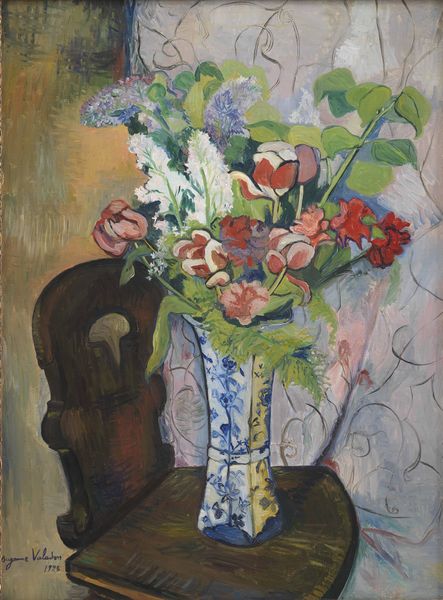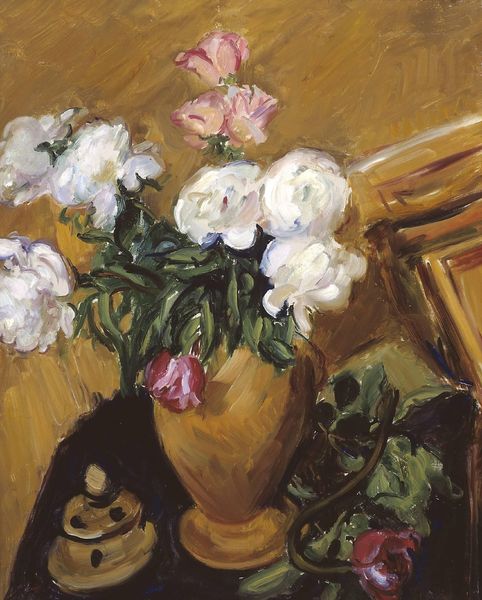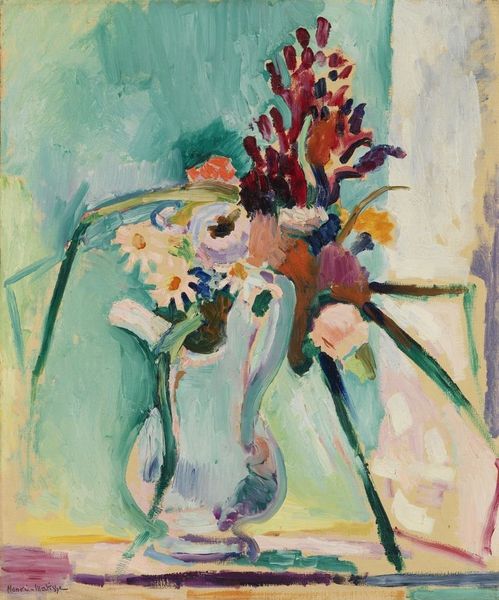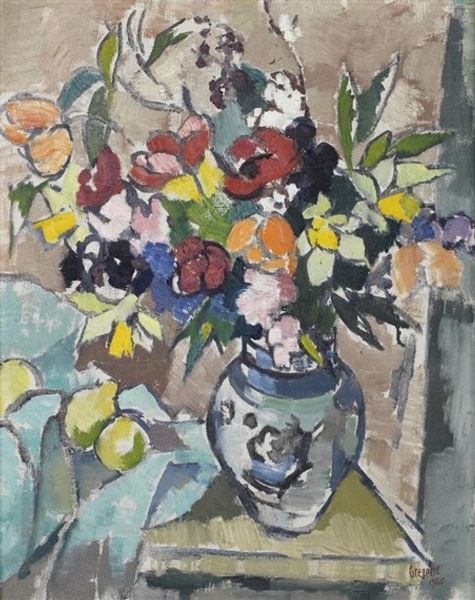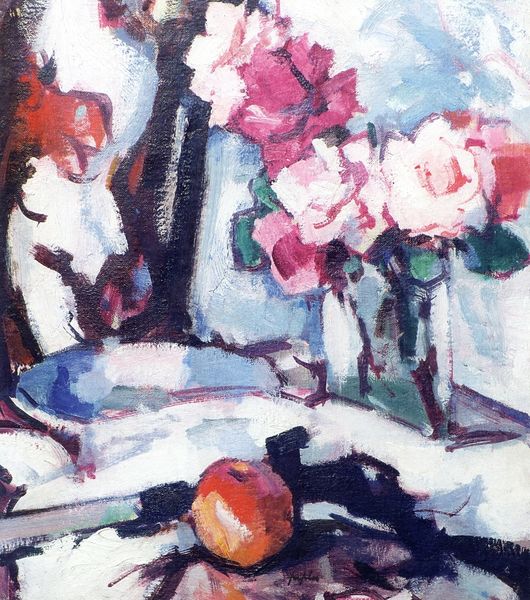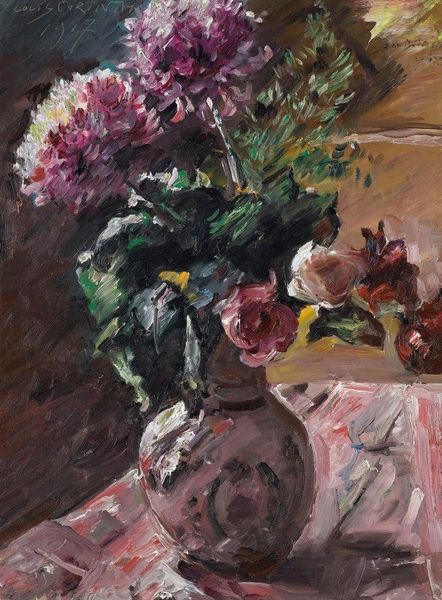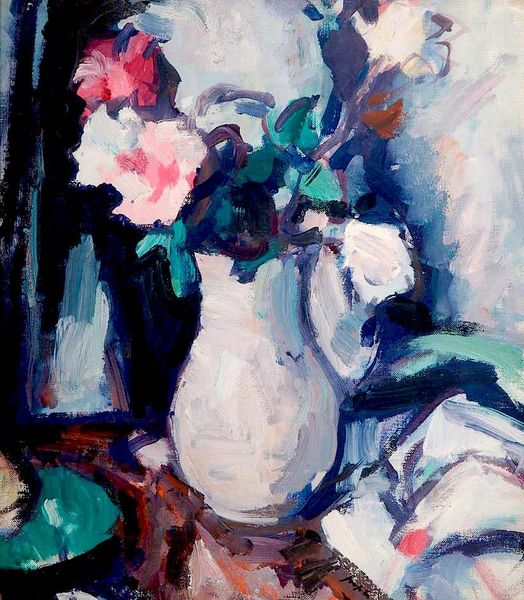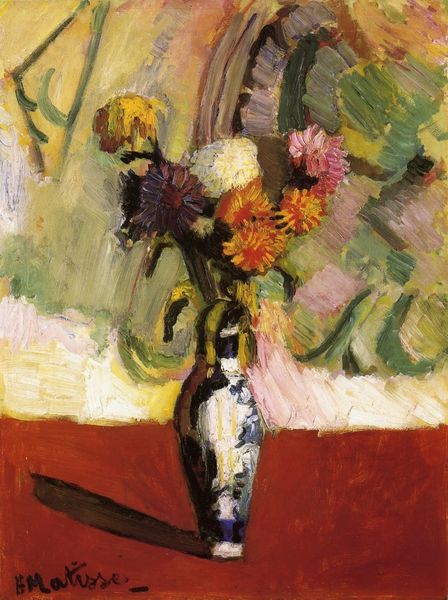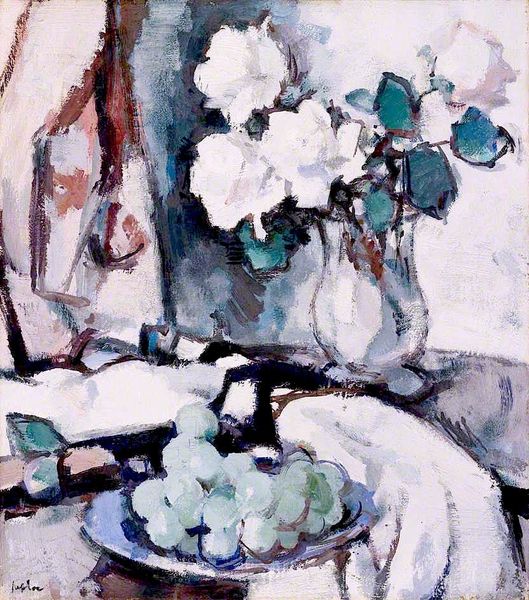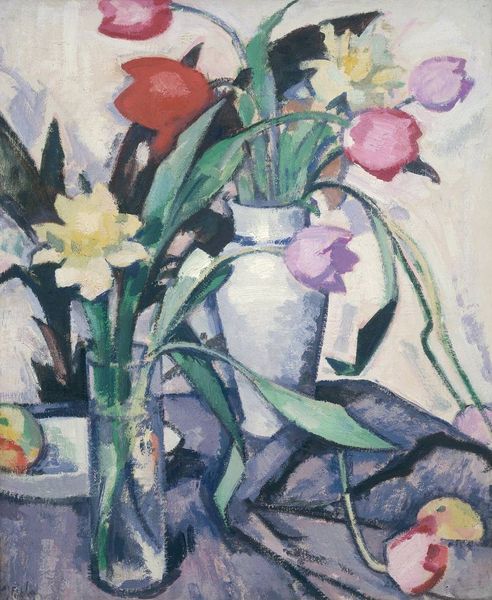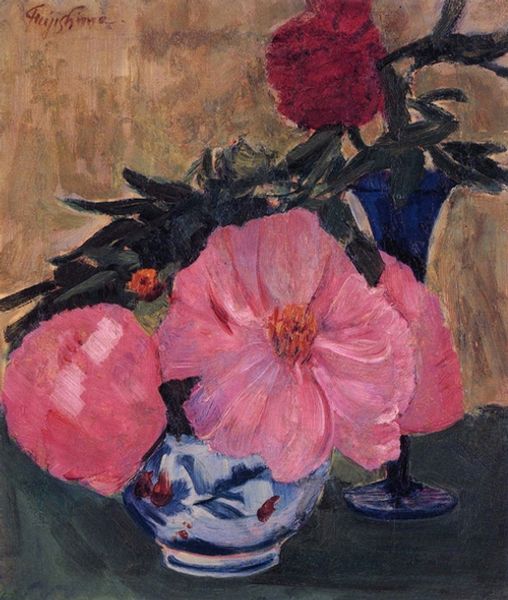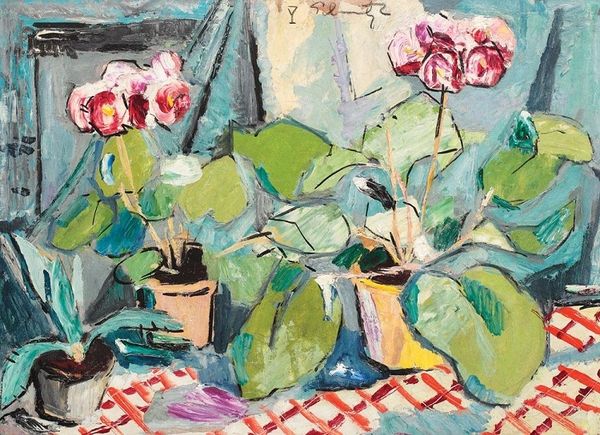
Copyright: Public domain
Editor: So, this is Samuel Peploe’s “Martagon Lilies” from 1930, an oil painting. There's something about the bold strokes that feels quite energetic. How would you interpret the symbolic meaning within the floral imagery? Curator: The Martagon lily itself is fascinating. Across cultures, lilies often represent purity, rebirth, and even transience. However, Peploe isn't necessarily aiming for straightforward symbolism. Instead, notice how the petals are rendered. Aren't they almost flame-like? Editor: Yes, I see that. It’s like he’s capturing a fleeting moment of intense vibrancy. Is that a common interpretation? Curator: It is more about the feeling a flower evokes. Consider that the expressive brushwork aligns the flowers to a Fauvist or early Expressionist sensitivity where the personal, subjective emotional response carries more weight than literal botanical accuracy. The color is saying something. Is that not its own language, like our dreams or nightmares? Editor: That makes sense. So the bold color isn’t necessarily about, say, accurately depicting the flower, but about something deeper? Almost primal, like pure feeling. Curator: Precisely. Look at how Peploe uses blues and purples in shadow—does that speak of coolness, or a brewing storm of some kind within the very essence of nature? Perhaps even a tension between growth and decay. Editor: It certainly does make me see the painting in a new light – as something more profound than just a pretty bunch of flowers. Curator: It's the intersection of observation and inner emotion. It speaks to a human longing, doesn't it? An attempt to pin down a moment, a feeling, a complex web of associations... it’s the art of capturing light and feeling through an enduring cultural symbol.
Comments
No comments
Be the first to comment and join the conversation on the ultimate creative platform.

